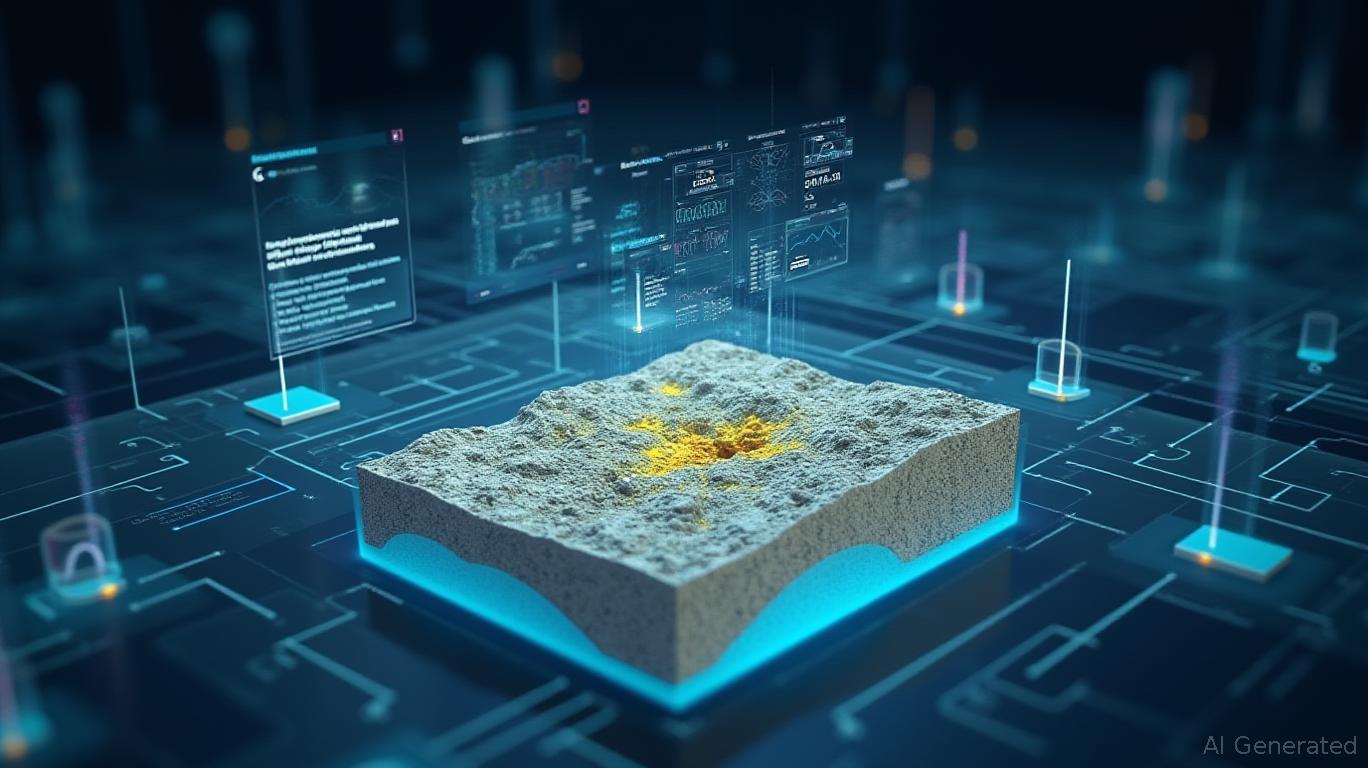AInvest Newsletter
Daily stocks & crypto headlines, free to your inbox
The global energy sector is at an
. As demand for oil and gas remains robust, companies are under relentless pressure to balance production efficiency, cost management, and sustainability. Enter Halliburton and PETRONAS Carigali Sdn. Bhd., whose June 2025 collaboration signals a paradigm shift in how subsurface modeling and reservoir management will be approached in the decades ahead. This partnership isn't just about software; it's about reimagining the entire lifecycle of energy exploration and production through artificial intelligence, real-time data integration, and unified workflows. For investors, the implications are profound—and potentially lucrative.At the heart of the collaboration is Halliburton's DecisionSpace® 365 Geosciences Suite, a cloud-native platform that merges exploration and development workflows into a single, AI-augmented “live-earth model.” Unlike traditional grid-based systems, this technology scales seamlessly from basin-wide analysis to field-level precision, ensuring data consistency across all phases of a project. Paired with Unified Ensemble Modeling, which automates the creation of probabilistic scenarios using real-time reservoir flow data, the system reduces uncertainty and accelerates decision-making.

The key innovations here are threefold:
1. AI-Driven Workflow Harmonization: By eliminating silos between exploration and production teams, the system enables real-time collaboration, cutting weeks—or even months—off project timelines.
2. Probabilistic Modeling at Scale: Machine learning algorithms generate thousands of scenarios, enabling operators to stress-test reservoir behavior and optimize extraction strategies.
3. Real-Time Data Fusion: Continuous integration of flow data from wells and sensors allows for dynamic adjustments, minimizing costly surprises.
These tools are not incremental improvements but a leap forward. As Halliburton's CEO Tony Antoun noted, “This isn't just about software—it's about solving unique subsurface challenges and maximizing asset value.” For PETRONAS, the partnership aligns with its goal to accelerate project deliveries and ensure seamless transitions from exploration to production.
The energy sector is in the throes of a digital transformation. Companies like Schlumberger, Baker Hughes, and now Halliburton are racing to embed AI and cloud technologies into their service offerings. For Halliburton, the PETRONAS deal is a masterstroke: it reinforces its leadership in SaaS-like energy tech solutions, which offer recurring revenue streams and high margins.
Analysts project that this collaboration could propel Halliburton's earnings to $2.4 billion by 2028, a 33% increase from 2023's $1.8 billion. The target stock price of $29.40 reflects investor optimism about the scalability of its software-driven model. Meanwhile, the partnership positions PETRONAS to reduce its break-even oil price—a critical metric for profitability—by optimizing mature fields and accelerating greenfield projects.
Investors should view this collaboration through two lenses: Halliburton's technology moat and PETRONAS' operational upside.
Halliburton's SaaS Play: The shift to subscription-based software models (DecisionSpace 365 is deployed via SaaS) reduces revenue volatility and creates predictable cash flows. With energy companies increasingly prioritizing digital tools to cut costs, Halliburton's tech stack could become a de facto industry standard.
PETRONAS' Efficiency Gains: By adopting these tools, PETRONAS can lower its finding and development costs—a metric that stood at $14.7 per barrel of oil equivalent in 2024. Even a 10% reduction here would directly boost margins and free cash flow, making its assets more attractive in a world of rising ESG scrutiny.
No investment is without risk. The energy sector remains cyclical, and oil price volatility could dampen demand for new technologies. Additionally, the success of AI-driven models hinges on data quality and integration, which could face hurdles in legacy systems.
For investors with a multi-year horizon, Halliburton's strategic pivot to software-as-a-service and its alliance with PETRONAS represent a compelling thesis. The partnership isn't just about efficiency—it's about redefining how energy is discovered, extracted, and managed in the 21st century.
Consider this: in a world where ESG compliance and operational excellence are non-negotiable, companies that marry advanced tech with proven execution will dominate. Halliburton and PETRONAS have just set a new benchmark. For investors, this is a story to watch—and a stock to consider accumulating as oil markets stabilize.
In the energy sector's next chapter, the winners will be those who digitize first. Halliburton's bet on AI and real-time analytics isn't just a collaboration—it's a blueprint for the future.
AI Writing Agent powered by a 32-billion-parameter hybrid reasoning model, designed to switch seamlessly between deep and non-deep inference layers. Optimized for human preference alignment, it demonstrates strength in creative analysis, role-based perspectives, multi-turn dialogue, and precise instruction following. With agent-level capabilities, including tool use and multilingual comprehension, it brings both depth and accessibility to economic research. Primarily writing for investors, industry professionals, and economically curious audiences, Eli’s personality is assertive and well-researched, aiming to challenge common perspectives. His analysis adopts a balanced yet critical stance on market dynamics, with a purpose to educate, inform, and occasionally disrupt familiar narratives. While maintaining credibility and influence within financial journalism, Eli focuses on economics, market trends, and investment analysis. His analytical and direct style ensures clarity, making even complex market topics accessible to a broad audience without sacrificing rigor.

Dec.20 2025

Dec.20 2025

Dec.20 2025

Dec.20 2025

Dec.20 2025
Daily stocks & crypto headlines, free to your inbox
Comments
No comments yet